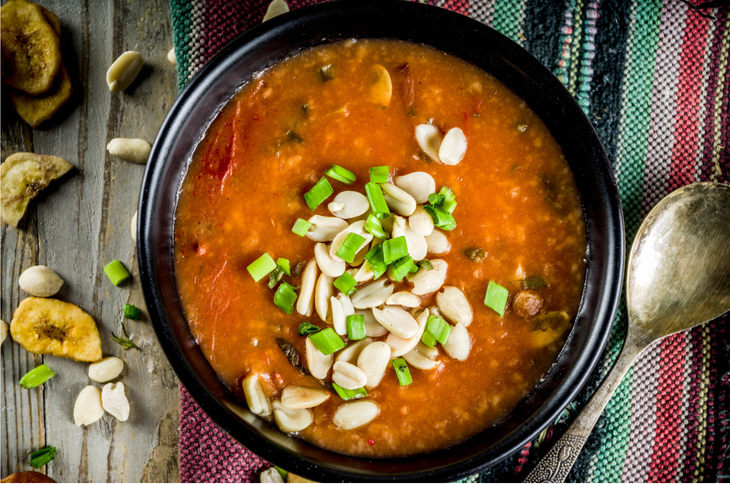New perk! Get after it with local recommendations just for you. Discover nearby events, routes out your door, and hidden gems when you sign up for the Local Running Drop.
Eating local, fresh, seasonal produce is typically top of mind in spring and summer, when visiting a farmers market is an exciting and refreshing family outing. But though it can seem harder to come by in the winter, it’s still important to try and keep with that consistency, especially for runners who need a steady flow of nutrient-rich foods to keep us fueled.
However, fresh doesn’t always mean better. “You want to look at where it is fresh from,” says Nancy Clark, a sports nutritionist with a private practice in the Boston area. Your grocery store shelves are likely lined with produce delivered from all over the country, which can be a burden on the environment. The less distance your food has to travel to get to you, the fewer greenhouse gases are potentially emitted in the process of getting it to your plate.
Eating local produce can also help your community. After an extraordinarily hard year, your local farmer could use some extra attention. According to the American Farm Bureau, family farm bankruptcies rose 8 percent in June of 2020 due to the COVID-19 pandemic, with farms in the midwest and southeast (specifically Wisconsin, Nebraska, Minnesota, and Georgia) being hit the hardest.
If you can’t buy what you need in-season and locally, frozen or canned produce is the next best thing. “Frozen and canned vegetables actually have a lot of nutritional value,” says Clark. “To buy locally saves on transportation cost and is more sustainable, but you can get very nutritious foods if they’re frozen or canned also.”
The key to frozen and canned, says Zach Conrad, nutritionist and assistant professor at William & Mary, is to look for low-sodium and low-sugar options.
But if you want to eat something fresh and local right now, this flexible recipe touches on some produce that is available in a tough month like January, including:
- Bell peppers
- Onions
- Tomatoes
- Sweet potatoes
- Spinach
- Peanuts
Savory African Peanut Stew
Clark has provided one of her favorite recipes, an African peanut stew that contains many vegetables that are in season in January (take a look at the chart below to see what’s in-season where you live). If a particular ingredient is not seasonally available in your state, remember that frozen or canned are excellent substitutes. Or if your state isn’t listed, the whole dish can be made with preserved ingredients.
This recipe is excerpted from Nancy Clark’s Sports Nutrition Guidebook, 6th Edition and was contributed by registered dietitian Julia Robarts.
Serves 6
Ingredients
3 tablespoons olive oil
1 medium sweet bell pepper, diced (about 1 cup, or 150 g)
1 medium onion (yellow or Vidalia), diced (about 1 cup, or 160 g)
1 pound (480 g) chicken or pork tenderloin, cut in bite-sized pieces
1½ teaspoons salt
1 teaspoon ground black pepper
1½ teaspoons minced garlic, or ¼ teaspoon garlic powder
1 tablespoon fresh ginger, diced
2 teaspoons ground coriander
⅛ teaspoon cayenne pepper, or to taste
1 can (15 oz., or 450 g) diced tomatoes, undrained
2 large sweet potatoes (about 2 lb., or 900 g), peeled and chopped
3 cups (720 ml) chicken broth
½ to ¾ cup (130 to 175 g) natural peanut butter
Optional: 1 to 2 cups (65 to 135 g) baby spinach, 1 to 2 tablespoons apple cider vinegar (brightens the flavors), ½ cup (60 g) peanuts for topping
Make It
In a large soup pot, heat the olive oil over medium-high heat. Add the diced peppers and onions and sauté until softened, 3 to 5 minutes. While that is cooking, sprinkle the salt and pepper over the chicken (or pork) pieces.
Add the chicken to the pot and brown the meat on all sides, about 2 minutes. Drop in the garlic, ginger, coriander, and cayenne, and sauté for 1 minute more.
Pour in the canned tomatoes; add the sweet potatoes and broth. Cover and bring to a boil, and then reduce heat to a gentle boil for 15 to 18 minutes, until the sweet potatoes are softened.
Add the peanut butter, and whisk until smooth. Add the spinach. Cover and cook for an additional 1 to 2 minutes. Remove from heat; stir in the vinegar. Taste, and adjust seasonings (salt, cayenne, pepper) as desired.
Nutrition information: 2,600 total calories; 430 calories per serving, 28 g carbohydrate, 32 g protein; 21 g fat
What Produce is In Season in January?
This flavorful dish packs a nutritious punch with vitamins A, C, and E from the bell peppers, tomatoes, and spinach. And the onions and sweet potatoes are full of fiber. See below to make a plan to shop for the ingredients locally, if possible.
